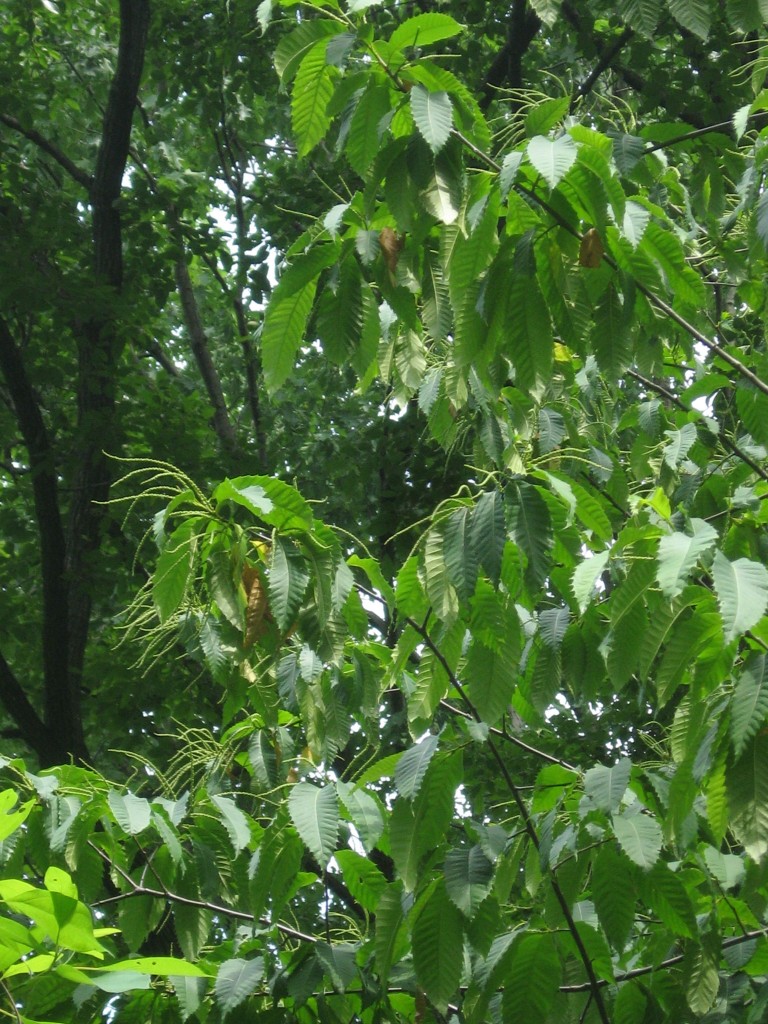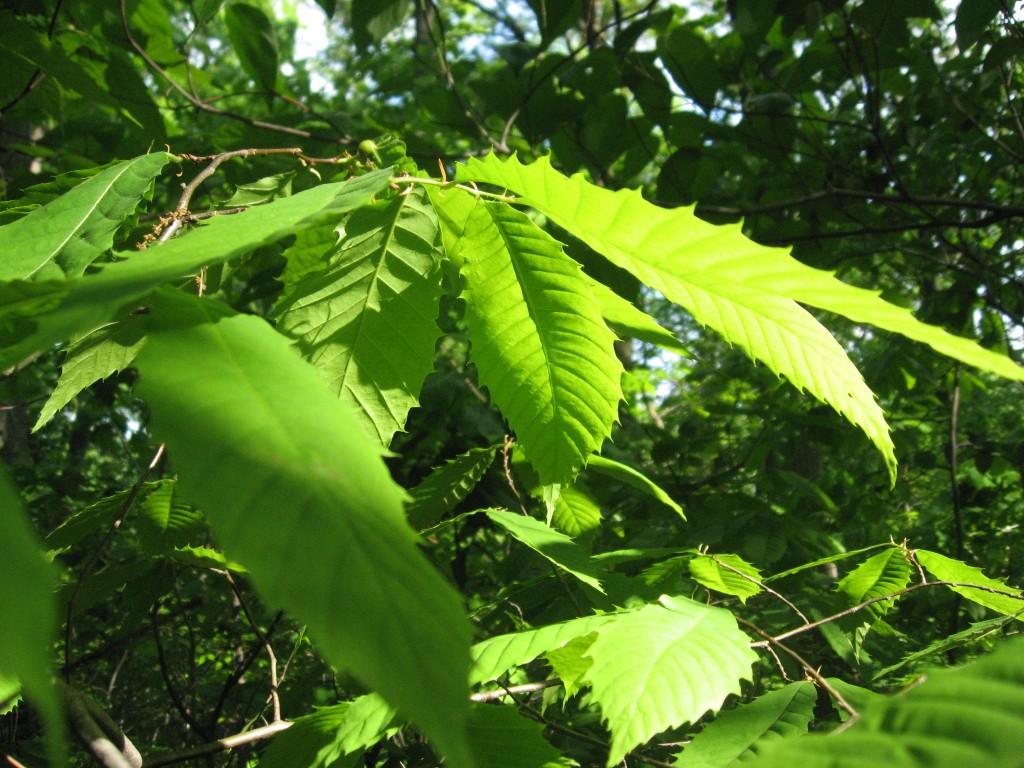ONE SPECIMEN Â OUT OF THE MANY CHESTNUT TREES IS BLOOMING RIGHT NOW IN MORRIS PARK

Just this one specimen is actually blooming. Â If there was one other in the vicinity blooming, then there could be viable seed in the fall. Â The tree is self-sterile, which means that there needs to be two separate trees blooming near each other that cross-pollinate in order or the seeds of each tree to be fertile, which means that they will germinate the next season and grow a new tree. Â However this is not the case. Â This blooming tree will not succeed in creating fertile seed in these conditions. Â We looked carefully among the many other Chestnut trees growing in the area for another one that was blooming and there were none. This may well be the only blooming Chestnut tree in all of Philadelphia.
Just to see this tree blooming is a rare sight, and we savored the view.  This is a tree that has become blighted and reduced from a canopy tree that covered the Eastern United States to a shrub that barely makes a presence on the forest floor.  The blight was brought in as an  introduced fungus on the Chinese Chestnut tree, imported to the Bronx Zoo in New York City in 1904.
The Chestnut Tree  was the tallest and most majestic tree in our forests.  It gave us the Chestnut, a sweet and nutritious nut (from the many written accounts), something that is now gone completely just 100 years after the initial introduction of the Chinese chestnut, which was carrying the deadly fungus, but is not affected by it.
The fungus that was growing on the Chinese chestnut was completely overlooked, yet the effects it has made on the entire forest of the Eastern United States is completely devastating. Â It ended up destroying billions of trees, and has brought the American forest into a state of disrepair.
The blight only kills the living tissue above the ground level. Â The roots are not affected and they continue to send out shoots, which become shrubs. Â And from time to time, these shrubs will bloom, as if they were the trees they once were.

Then there is the question of why do we care about having a Chestnut tree, here in West Philadelphia, produce a viable, fertile seed? Â To us, the Chestnut trees that still manage to grow here are still hundreds of years old. The ones that are now mere shrubs were once majestic canopy trees, with massive trunks, 6 feet in diameter. Â To have these same trees create seeds and if these seeds grew into new trees, then these new trees would represent the original genetic pool of the trees that grew and still grow in this very area and region for thousands of years. Â Someday if a disease resistant strain could be created, then there would be the option of breeding a’ Philadelphia’ tree with the newly developed one, and the local provenance of the tree could potentially live on into the future. It is important to keep a species alive, it is also important for any given area to keep a local population of that species alive. Â This local population has adapted the best to that area, whereas specimens from an introduced population may not be as hardy or adapted to the specific conditions of the locality, and they may wither away in the long term. Â Or they may become invasive.
When we saw the blooming catkins of Castanea dentata, the American chestnut tree here in Morris Park, we felt a bit of what it was like just 300 years ago, right here in this area of what we now call Morris Park, Philadelphia.  This blooming tree, for the most part reduced to a shrub status as a species is doing what it has been doing for the many thousands of  years before our time.


